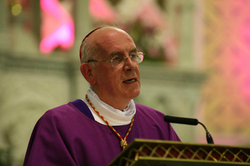This thoughtful piece by Fr. Raymond DeSouza offers an answer that seems to be on target:
In the 1960s, like much of society and after the Second Vatican Council, the Church simply abandoned her disciplinary life. Doctrinal dissent was not corrected, but often celebrated. Liturgical abuses, both minor and outrageously sacrilegious, were tolerated. Bishops simply stopped inquiring into priestly asceticism, prayer and holiness of life. Non-Catholics often have an image of the Catholic Church as a ruthlessly efficient organization with a chain of command that would make the armed forces jealous. The reality for most of the 1960s to 1980s was the opposite. A priest could preach heresy, profane the Holy Mass, destroy the piety of his people and face no consequences. The overseers decided to overlook everything. It is any surprise, then, that when accusations of criminal immorality emerged they too were dealt with inadequately, if at all?
Pope Benedict, in his bluntly-worded letter to Irish Catholics last week wrote that the bishops “failed, at times grievously, to apply the long-established norms of canon law to the crime of child abuse.” Too many bishops weren’t Catholic enough. They failed, for example, to follow the clear direction of the 1983 Code of Canon Law that a cleric who commits sexual sin with a minor “is to be punished with just penalties, not excluding dismissal from the clerical state if the case so warrants.”
A culture of laxity had so infected bishops that their disciplinary muscles had severely atrophied. It was not as if they were vigilant rulers in all aspects, but perversely indulgent of sexual abuse. Indulgence was shown to abuses of all kinds. So latitudinarian had the clerical culture become that even modest attempts at doctrinal discipline were widely mocked — or do we forget that the progressive press, inside and outside the Church, calling Joseph Ratzinger “God’s Rottweiler”?
Read more right here.

